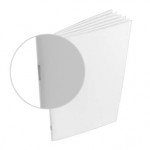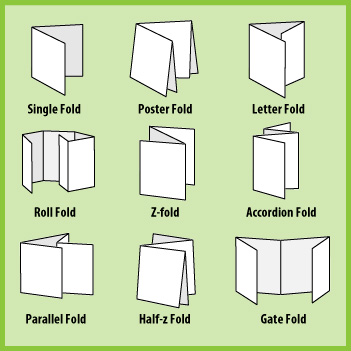Binding Methods
What is Saddle Stitch Binding?
Saddle Stitching
Most common type of binding, is stapling sheets together where they fold at the spine. They are commonly used for Booklets, brochures, newsletters, pamphlets, direct mailers, magazines and catalogs.
- Fast & Inexpensive [least expensive of all binding options].
- Widely and readily available, since most printers saddle stitch in-house.
- Lays relatively flat.
- Accommodates special inserts like business reply envelopes, membership forms, order blanks.
- Gatefolds and foldouts are possible.
- Can use a self or separate cover.
Limitations
- Longevity. Not recommended for pieces intended for heavy use.
- Lacks printable spine.
- Not possible to bind in a single leaf of paper [as in perfect binding], but single leaves canbe stitched into a saddle stitched book if it has a 3.5″ inch flap, or extension.
- Thickness limitations. Documents thicker than 0.25″ inch may require another binding technique.
- May require special design adjustments for creep, especially small formats with high page counts.
THE PROCESS
- Signatures are folded with a bind fold [a fold in the paper, which allows a mechanicalor suction device to find the center].
- Signatures are opened with suction cups or mechanical grippers.
- Open signatures are hung over a chain or “saddle.”
- The signatures may then be transferred to succeeding feeding stations. This is howsaddle stitched signatures are inserted into each other.
- Covers are scored and folded on the saddle stitching machine. Then they are laidon top of the signature[s].
- The product is stitched through the fold, trimmed on three sides.
Which binding techniques are best suited for short runs?
Common binding techniques, like saddle stitching, loop stitching and side stitching are the simplest – and most economical – choices for short runs.
What is the best binding technique if I have critical crossovers?
The binding techniques that can best accommodate tight registration on crossovers are saddle stitching, loop stitching, double loop, split wire, plastic comb binding, perfect binding, lay flat and sewn binding. Spiral wire and plastic spiral wire are not good choices when crossovers are critical because the registration from page to page will vary slightly. Be sure to check with your sales representative at the onset of your project so we can plan for tight crossovers in your design.
What are the different types of folding?
Paper can be folded in countless ways. Understanding folding is essential, since mismeasured folds are often the perpetrators of many reprints. Folding is not a precise art. Generally, you can expect a tolerance of 1⁄32“ inch per fold. This depends on the weight and caliper of the paper stock and the placement of the folds. This impacts the way the job will finish; proper planning and making sample mockups in the design and production stage will help eliminate errors. These are some of the most common folding styles used in print production today. Use of standard names will help ensure good communication between designer and printer.

